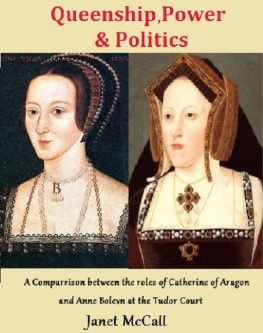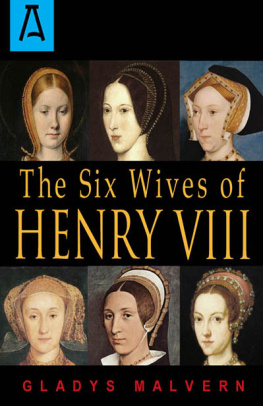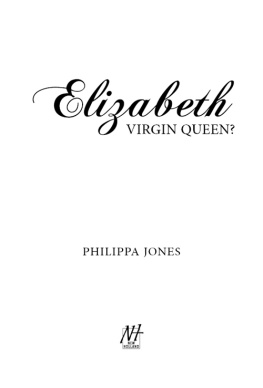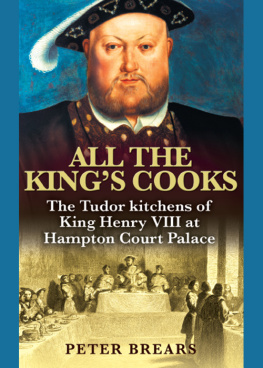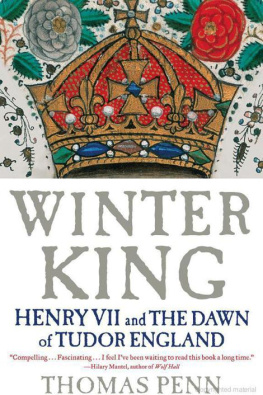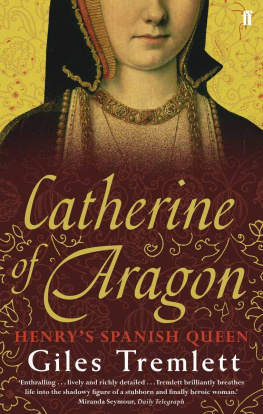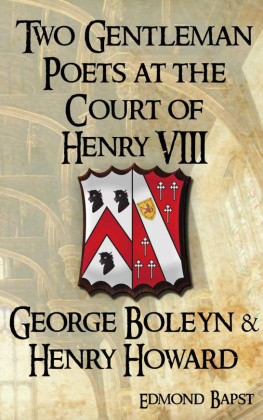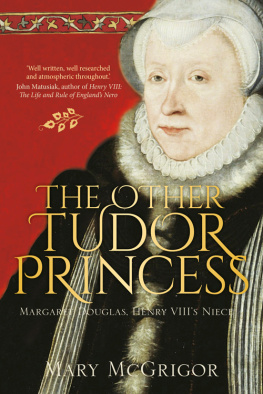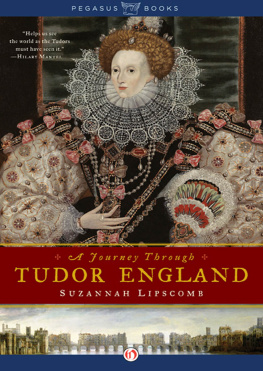Queenship, Power & Politics
A comparison of the roles of Catherine of Aragon and Anne Boleyn at the Tudor Court
Janet McCall
Contents
Introduction
Chapter one : Early life of Catherine of Aragon
Chapter two : Early life of Anne Boleyn
Chapter three : Queenship
Chapter four : Downfall
Conclusion
Bibliography
Introduction:
The Queen consorts of Henry VIII are usually remembered for their failure to aid Henry in securing the Tudor dynasty. The study of Queen Consorts has recently become popular as they are an anomaly in the structure of power during the Renaissance period. Power in the early Modern period was male dominated, Henrys obsession to produce a legitimate son is testimony to the importance of continuing male rule. The two most prominent and well documented wives of the Tudor monarch were Catherine of Aragon and Anne Boleyn, the period from 1527 to 1536 was one entrenched in rivalry and competition for the position of Queen. The events of this period resulted in irreversible changes for both domestic and foreign politics, which led to the creation of the Church of England. An analysis of Catherine and Annes reigns is crucial to understanding the nature of queenship in early modern England.
The Court of Henry VIII was a magnate, it was the centre of power. Henrys Court was the machine of government, it was here where the most critical decisions were made, where international relations were discussed and alliances were formed. Political life centred on the person of the King. Henry VIII was the centre of power in England, undoubtedly his personal relationships also were inextricably linked to politics. His queen consorts were placed at the centre of the Court and maintained their own autonomous power, which was subsequently dependent upon their relationship with Henry.
Women in the sixteenth century were defined by their sexuality, their power depended on their marriage alliances and their fertility. The central concern and duty for Henrys consorts was to provide him with a living male heir. Through the analysis of Henry VIIIs queen consorts in detail it is possible to understand the extent of the personal political power they possessed, how much influence they had and the extent to which their power relied on them being in the Kings favour.
Due to the limited availability of sources relating to the consorts, I have focused primarily on the two most prominent wives of Henry VIII, Catherine of Aragon and Anne Boleyn in order to research the extent of female involvement with political power. They were the only two of Henry VIIIs wives who were formally crowned Queen of England in Westminster Abbey, this instantly attaches political prominence to their role. This book will explore the extent to which Anne Boleyn and Catherine of Aragon held power and the extent to which this depended on their personal relationship with Henry VIII. I will explore Anne and Catherines rise to power before their marriage to the King, followed by their time in the role of Queen Consort and finally the circumstances surrounding their downfall from power, in order to comment of the nature of their involvement with Court politics.
The majority of sources which have survived have been collated from a number of different archives to create The Calendar of State Papers, Foreign and Domestic 1509-1603 . These volumes were originally complied in the nineteenth century by eminent historians J. S. Brewer, J. Gairdner and R. H. Brodie. The calendar form provides a clear chronological sequence to view events recorded by both domestic and foreign contemporaries. The documents have been translated in to English which is extremely useful, however we must account for the possibility of mistranslation when analysing documents, as this could potentially distort the overall meaning. This is an invaluable resource when studying the Tudor period as it allows a unique insight in to the workings of Tudor Government. It is a useful source to use when analysing the extent of the Queen Consorts role within Henry VIIIs government. However, due to the compiling of the documents in the nineteenth century we according to Stephen Alford have to view The State Papers through a Victorian lens. To fully utilise the documents preserved, a revisionist approach is required.
The Life and Death of Cardinal Wolsey is an account written by George Cavendish, who served as Cardinal Wolseys undersecretary until his demise in 1530. The account was composed in the years between the 4 th November 1554 and the 24 th June 1558, over twenty years after Cavendish left Court. Cavendishs close proximity to the Cardinal for a considerable period of time allow for a unique insight in to the inner workings of the Court. The source is limited due to its obvious bias nature towards Anne Boleyn and because of the time lapse between events and the composition. However, Cavendish provides a unique contemporary insight in to the Tudor Court from a person positioned at the centre of power.
The Spanish Chronicle composed by an unknown author, details events beginning in 1527 and ending with the Duke of Northumberlands execution in 1553. It was originally composed in Spanish under the title, ` Chronica Del Rey Enrico Otavo De Inglaterra. I have used a translated version of the Chronicle by M.A.S Hume for the purposes of my research. The Chronicle documents contemporary events, some in more detail than others which indicates the author felt some events were more prominent. Hume suggests the original Spanish document appears to have been written around 1550. It is evident from the source the writer was present in London for the events which are depicted, this eye witness source provides an insight in to the perceived role of Queen Consorts. The Chronicle is obviously bias due to the author presumably being Spanish and Catholic, but it depicts contemporary events which is extremely useful. This source provides historians with a foreign perception of the events of Tudor life, by remaining annonomoys the author arguably depicts an honest view of their perception of events which is very valuable to the study of this period.
The dispatches of Eustace Chapuys provide a full account in to the events of the Tudor Court beginning from his arrival to England in October 1529. Chapuys was the Imperial ambassador to Charles V, his meticulous accounts detail the daily events especially concerning the divorce of Catherine of Aragon and Henry VIII. His translated reports are included in the Calendar of State Papers, Foreign and Domestic 1509-1603 . The Calendar includes governmental documents which can be compared to corresponding foreign reports. Ambassadorial dispatches were often written in cipher, therefore when reading this type of source we must consider the reliability as it is possible parts may have been decoded incorrectly. The Ambassadors bias towards Anne Boleyn is obvious to detect, he refers to her as the Lady, putain and the Concubine, but the events depicted correspond to surviving governmental documents. Lauren Mackay suggests despite his lack of objectivity, the dispatches provide a first-hand glance in to life at Court. Chapuys accounts are invaluable to this study, his position required him to report to the Holy Roman Emperor in accurate detail on the politics of Henrys reign thus providing modern historians with a detailed source.
The lives of Catherine and Anne are intertwined, historians work often takes a one sided preferment to one of the queens, this method for almost five centuries has created a distinctive historiography. Catherine of Aragon is traditionally portrayed as a powerless victim, whilst Anne is portrayed as a seductress and the cause of the reformation. This distinction is evident in Nicholas Sanders The Rise and Fall of the Anglican Schism , which was written in 1585. The work begins by Sander stating Queen Catherine was so saintly a woman in comparison to Anne who was full of pride, ambition, envy and impiety. This staunch Catholic view has provided the basis for the historiographical interpretations of Henrys first two consorts.
Next page
